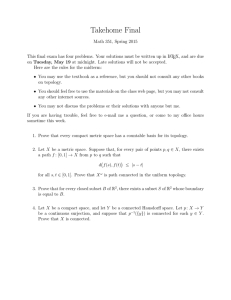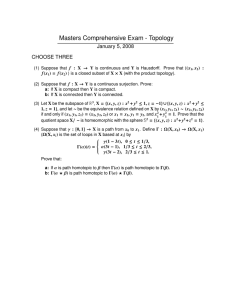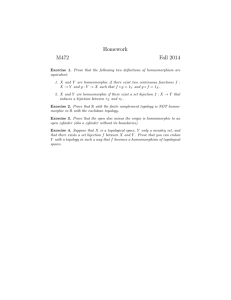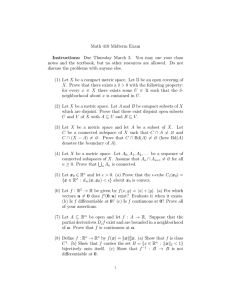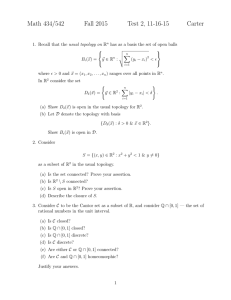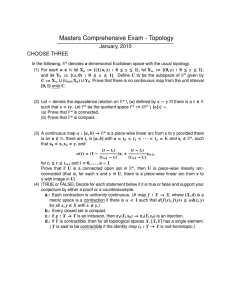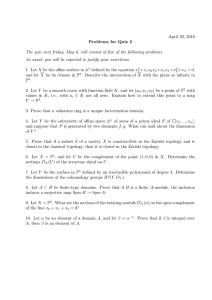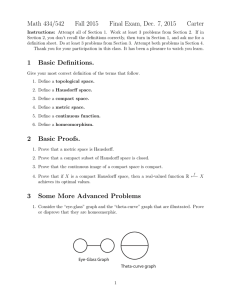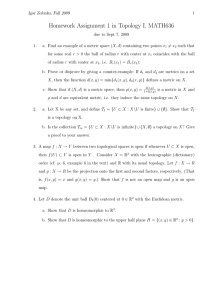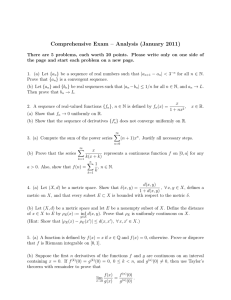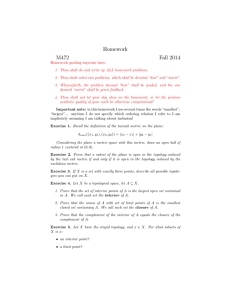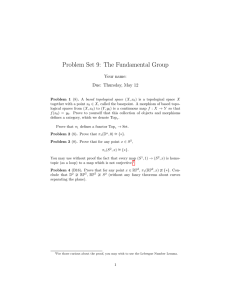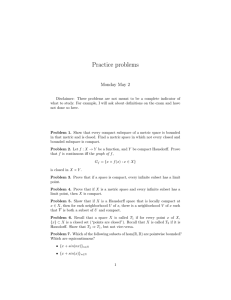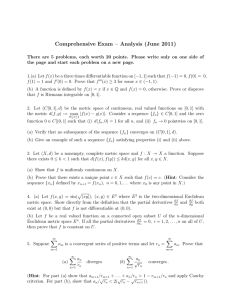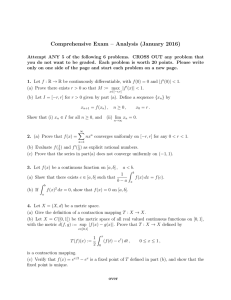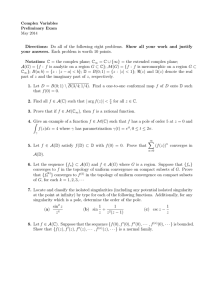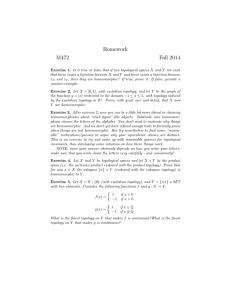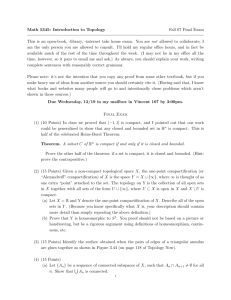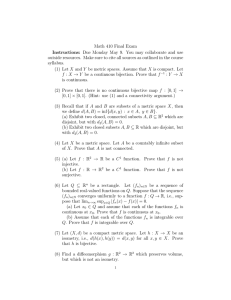Problem Set 8: Models, compactifications, identifying spaces, characterizing subspaces Your name:
advertisement
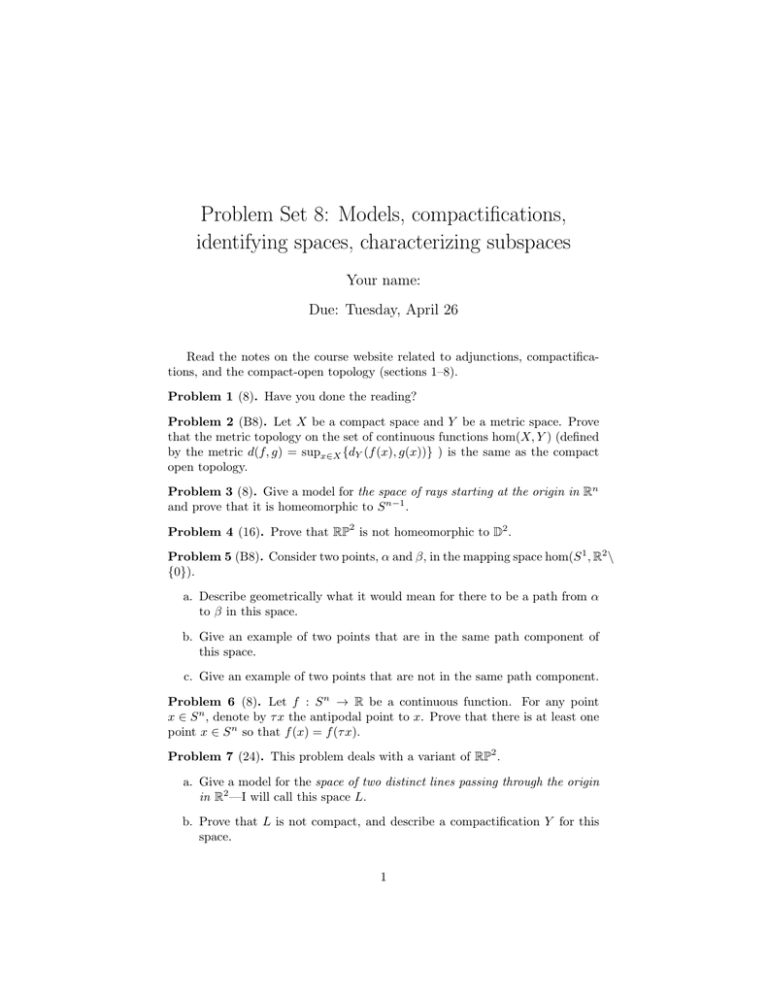
Problem Set 8: Models, compactifications,
identifying spaces, characterizing subspaces
Your name:
Due: Tuesday, April 26
Read the notes on the course website related to adjunctions, compactifications, and the compact-open topology (sections 1–8).
Problem 1 (8). Have you done the reading?
Problem 2 (B8). Let X be a compact space and Y be a metric space. Prove
that the metric topology on the set of continuous functions hom(X, Y ) (defined
by the metric d(f, g) = supx∈X {dY (f (x), g(x))} ) is the same as the compact
open topology.
Problem 3 (8). Give a model for the space of rays starting at the origin in Rn
and prove that it is homeomorphic to S n−1 .
Problem 4 (16). Prove that RP2 is not homeomorphic to D2 .
Problem 5 (B8). Consider two points, α and β, in the mapping space hom(S 1 , R2 \
{0}).
a. Describe geometrically what it would mean for there to be a path from α
to β in this space.
b. Give an example of two points that are in the same path component of
this space.
c. Give an example of two points that are not in the same path component.
Problem 6 (8). Let f : S n → R be a continuous function. For any point
x ∈ S n , denote by τ x the antipodal point to x. Prove that there is at least one
point x ∈ S n so that f (x) = f (τ x).
Problem 7 (24). This problem deals with a variant of RP2 .
a. Give a model for the space of two distinct lines passing through the origin
in R2 —I will call this space L.
b. Prove that L is not compact, and describe a compactification Y for this
space.
1
c. What does the space Y \ L look like?
d. When does a continuous function L → R extend to a continuous function
Y → R?
2
